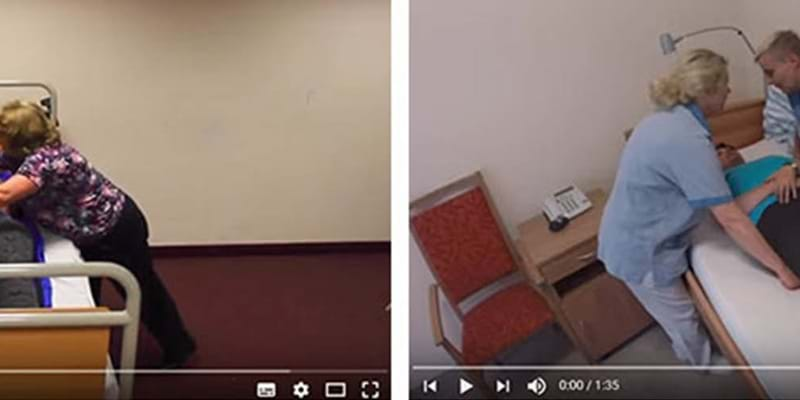
Objective Comparison of manual and mechanic transfers
A study, conducted by Professor Dr. Hans Günter Lindner from TH Köln University of Applied Sciences, shows, that using VENDLET in the transfer of bedridden clients result in great benefits in work health & safety, client comfort and overall efficiency, when compared to manual transfer methods.
11. April 2016
Subjective or Objective
In order to estimate the effects of different technologies, studies often use personal evaluations, in the form of interviews, as their data source.
However, the problem with these types of data is that the evaluations are subjective and dependent on organizational relations, personal opinions about technology, and not least the mood and wellbeing of the respondents. The subjective element of such data leaves room for a certain level of uncertainty about the validity of the results.
Vendlet has often been met with requests for an objective analysis of the effects of assistive living technologies.
Therefore, we have collaborated with Professor Dr. Hans Günter Lindner, who has conducted a groundbreaking study, which analyses the transfer process of four different types of transfers with 100% objectivity
Which Transfers were Included and how were they Measured?
Four of the most frequent types of transfers of bedridden clients were chosen for comparison:

1.
Transfer when performing personal care in the bed

2.
Transfer to move the client higher up in bed

3.
Positioning as a part of pressure ulcer prevention

4.
Applying and removing sling when transferring in and out of bed
The study focused on measuring 3 different conditions
- The physical strain on the healthcare staff’s back – particularly in regard to strain in the lower back when bending over
- Comfort of the bedridden client – particularly the number of times the client is touched and force used when the client is touched
- Efficiency/time consumption – how long does the transfer take compared to hourly wages
The baseline has been a bedridden client with limited resources, that cannot participate in the transfer themselves.
There are many different ways of conducting the above-mentioned transfers, therefore, the following methods have been singled out for the case of the study:
- 2 caregivers transfer the client without slide sheet
- 2 caregivers transfer the client with slide sheet
- 1 caregiver transfers the client – a two part sliding system is used in combination with a ceiling hoist
- 1 caregiver transfers the client with use of a VENDLET system
Transfers with VENDLET was been compared with each of the other methods separately.
The Objective Analysis
Data collection was done by filming all transfers performed by qualified personnel.
Thereafter, Professor Dr. Lindner went through the recordings with a unique software designed for the purpose, and broke down all of the transfer processes in to a series of short sequences. Afterwards a systematic and detailed analysis of time, actions, movements, facial expressions and gestures were conducted.
The transfer processes were divided into steps, thereafter four indicators, which affected both caregiver and client, were chosen for comparison:
- Number of times the bedridden client was touched
- Leaning angle of the caregiver’s back
- Force used when leaning forward
- Time leaning forward
The data was then entered into a simulation model developed especially for the purpose of this study.
Significant benefits of using VENDLET
No matter which transfer method VENDLET was compared to, the results speak to VENDLET’s advantage.
Transfers using VENDLET strain the caregiver’s backs significantly less, less force is needed, and the number of times the bedridden client is touched is reduced. It is particularly interesting, that when the client is touched by a caregiver using VENDLET, it is in a much more gentle and caring way, rather than with the purpose of moving them using force.
The study thereby supports the findings of previous studies, which also have shown that caregiver’s work health & safety is significantly improved, and that the caregivers report improved contact with the client.
When the amount of time spend for each transfer is included in the calculation, the study also shows that there are significant benefits of using the VENDLET. It is possible for the healthcare staff to conduct transfers on their own instead of in pairs, while many transfers are also done much faster with the system rather than manual methods.
As such, efficiency can be significantly improved, which means that the investment in VENDLET, in the vast majority of cases, phas a short return on investment.
Download PDF:
Lindner et al, 2016: Prozessoptimierung in der Pflege mit VENDLET V5, Reduktion von Kosten und Belastungen beim Umlagern von Patienten
Lindner et al, 2016: Process Optimisation in nursing with VENDLET V5 in Germany, Great Britain and Denmark
Lindner et al, 2016: Summary: Process Optimisation in nursing with VENDLET V5 in Germany, Great Britain and Denmark
